
伤口世界
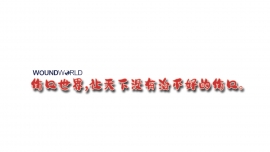
- 星期二, 16 4月 2024
Evaluation of a technology lipido-colloid non-adherent dressing with silver in the management of burn patients — a case series from India
Management, as well as prevention, of wound infection is key in the promotion of the healing process. In India, over one million people are moderately or severely burnt every year, and managing the challenging burn wounds is a daily reality for clinicians in the country. Silver has been used as an antimicrobial in burn wound management for decades and modern advanced dressings can provide safe prevention and management of infection in these cases. This article reports the cases of two adults, an infant and a child with burns, at risk of infection and managed with a Technology Lipido-Colloid non-adherent dressing with silver (TLC-Ag; UrgoTul Ag/Silver). The main benefits observed when using the evaluated dressing in these patients included rapid wound healing but also patient-related outcomes, such as decrease in pain and atraumatic removal.
Dr Venkateswaran
Plastic Surgeon, Jupiter Hospital, Mumbai, India
Dr Ravichander Rao A
Plastic Surgeon, Care Hospital, Hyderabad, India
Dr Krishna Kumar
Plastic, Aesthetics, Burns, Hand and Reconstructive Microsurgeon, Kovai Medical Centre & Hospital, Coimbatore, India
Dr Sankamithra
Consultant Plastic Surgeon, Lakshmi Medical center, Pollachi, India
Key words
- Burns
- Lipido-colloid non-adherent dressing
- Silver
Declarations
All authors have no particular conflicts of interest to declare regarding these cases.
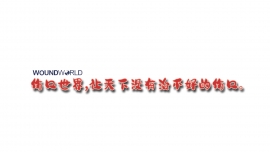
- 星期一, 15 4月 2024
EGF in the treatment of electrical burns and the decrease of bone resorption
Abstract: Electrical burns represent 5-8% of burns in developed countries (World Heath Organization, 2016). A multidisciplinary approach is required due to the variety and complexity of injuries, which are affected by the intensity of the electrical current, compromised tissues in the patient, and the duration of exposure. This paper presents a patient case and discusses complications to consider. The efficacy, tolerability and safety of recombinant human epidermal growth factor (rhEGF) is discussed together with other considerations and long-term outcomes.
Espitaleta Omaira
Department of Plastic and Reconstructive Surgery, Clínica Cartagena del Mar S.A.S.
Dr Román Carlos
Plastic Surgeon, Clínica General del Caribe
Gaviria N. Ángela María
BSc, MSc Epidemiology, Grupo Biociencias, Institución Universitaria Colegio Mayor de Antioquia
Carrillo B. Carlos Alberto
Epidemiologist, Sociedad Colombiana de Medicina Preventiva
Key words
- Electricai burns
- rhEGF
- Multidisciplinary

- 星期五, 12 4月 2024
Impact of Freestyle Libre 2 on diabetes distress and glycaemic control in people on twice-daily pre-mixed insulin
Samina Ali
In the UK, people with type 1 diabetes and those with type 2 diabetes managed with multiple daily insulin injections (MDI) meet the eligibility criteria for continuous glucose monitoring (CGM) use. Previous studies have shown that CGM results in improvements in diabetes distress and HbA1c in people with type 2 diabetes on MDI; however, studies in people with type 2 diabetes on pre-mixed insulin regimens have not been published to date. This service evaluation of ten people with type 2 diabetes on twice-daily pre-mixed insulin regimens using the FreeStyle Libre 2 CGM system demonstrates improvements in both diabetes distress scores and HbA1c. Although only a small study, the findings suggest that expanding CGM eligibility criteria to include this patient group may be beneficial.
Citation: Ali S (2024) Impact of Freestyle Libre 2 on diabetes distress and glycaemic control in people on twice-daily pre-mixed insulin. Diabetes & Primary Care 26 : [ Early view publication]
Article points
1. There are limited studies on the use of continuous glucose monitoring (CGM) in people with type 2 diabetes on twice-daily pre-mixed insulin regimens.
2. In this small service evaluation, CGM use was associated with reductions in PAID (Problem Areas In Diabetes) scores of diabetes distress and in HbA1c.
3. Local and national guidelines may need to be amended to include twice-daily pre-mixed insulin in the eligibility criteria for CGM use in people with type 2 diabetes.
Key words
– Continuous glucose monitoring
– Insulin
– Pre-mixed insulin
– Type 2 diabetes
Author
Samina Ali, Advanced Practice Pharmacist, NHS Greater Glasgow and Clyde.
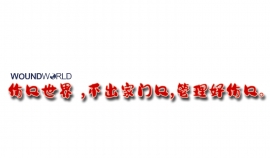
- 星期四, 11 4月 2024
Fib-4 – A diagnostic and prognostic marker for liver and cardiovascular events and mortality
The Fibrosis-4 index (Fib-4) can be used not only as a diagnostic tool for assessing advanced fibrosis in those with or at risk of developing non-alcoholic fatty liver disease, but also as a pragmatic biomarker to help assess the risk of liver and cardiovascular events and mortality over time, according to this large, prospective, longitudinal cohort study published in The Lancet Regional Health – Europe. The associations between Fib-4 and risk of liver events, cardiovascular events and all-cause mortality were independent of cardiovascular risk at study baseline, and an increase or decrease in Fib-4 score over 12 months was correlated with increased and decreased risk, respectively, across all three event types. Although hazard ratios for liver and cardiovascular events and mortality over time were initially higher in the indeterminate-risk group (Fib-4 score of 1.3–2.67) compared to the low-risk group (Fib-4 <1.3), they were no longer significant after adjustments for age, sex and baseline Framingham risk score. However, the hazard ratios for all three outcomes remained significantly elevated in those with a Fib-4 score of >2.67 (i.e. those with a high risk of advanced fibrosis) even after these adjustments. The authors conclude that sequential Fib-4 testing should be part of ongoing care in people with obesity and/or type 2 diabetes, as well as being used as a diagnostic marker for risk of advanced liver fibrosis to prompt referral for further testing.
Pam Brown GP in Swansea
Citation: Brown P (2024) Diabetes Distilled: Fib-4 – A diagnostic and prognostic marker for liver and cardiovascular events and mortality. Diabetes & Primary Care 26: [Early view publication]
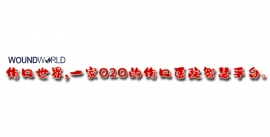
- 星期三, 10 4月 2024
Platelet-rich plasma (PRP) for treating chronic or complicated wounds in neonates and children: a case series
Abstract: Plasma derivatives have extensive applications in the field of regenerative medicine. Platelet-rich plasma (PRP) is a blood component acquired through centrifugation and can be administered through periwound injection or direct application to the wound bed area. PRP aids in shifting the healing process from chronic to acute, fostering regeneration in traumatic and surgical wounds. Here, we present seven cases of challenging wounds in paediatric patients that were treated using PRP at our institution.
Biagio Nicolosi,
Wound Clinical Nurse Specialist, Burn Center, Health Professions Department, AOU Meyer Children’s Hospital IRCCS, Florence, Italy
Virginia Carletti,
School of Paediatric and Neonatal Surgery, AOUMeyer Children’s Hospital IRCCS, Florence, Italy
Martina Certini,
School of Paediatric and Neonatal Surgery, AOU Meyer Children’s Hospital IRCCS, Florence, Italy
Giorgia Libro,
School of Paediatric and Neonatal Surgery, AOU Meyer Children’s Hospital IRCCS, Florence, Italy
Emiliano Ambretti,
School of Paediatrics, University of Siena, Siena, Italy
Paola Pavan,
Department of Immunohematology and Transfusion Medicine, AOU Meyer Children’s Hospital IRCCS, Florence, Italy
Flavio Facchini,
Department of Paediatric and Neonatal Surgery, AOU Meyer Children’s Hospital IRCCS, Florence, Italy
Antonino Morabito, Department of Paediatric and Neonatal Surgery, AOU Meyer Children’s Hospital IRCCS, Florence, Italy; Department of Neurosciences, Psychology, Drug Research and Child Health (NEUROFARBA), University of Florence; Florence, Italy; School of Health and Society, University of Salford, Salford, UK
Valentina Granai
Pediatric intensive care unit Nurse, Meyer Children’s hospital IRCCS, Florence, Italy
Key words
- Paediatrics
- Plasma derivatives
- Regenerative medicine
- Wound dehiscence
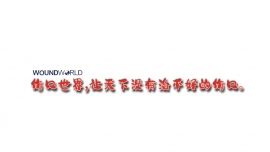
- 星期二, 09 4月 2024
Adherence and oxygen therapy: a case series
Abstract: Chronic, hard-to-heal wounds affect millions of people worldwide, representing a burden for healthcare systems, society, and patients. The following case series describes the use of an advanced therapy (oxygen wound therapy). The results of two patients with chronic wounds suggests this that oxygen therapy can improve outcomes, while allowing self-care by the patient and leading to increased adherence to the treatment plan.
Aisling Roberts, Surgical ACP, DrEd (year 3), Mscadvanced practice in skin integrity, Bsc, Pgc in chronic oedema. Great western hospital
Key words
Adherence Chronic wounds Oxygen therapy Self-care
Declaration of interest
The authors have no conflicting interests. This was a product in current use in the Leg Ulcer Clinic. Both patients consented to the use of their treatment and images for this publication.
